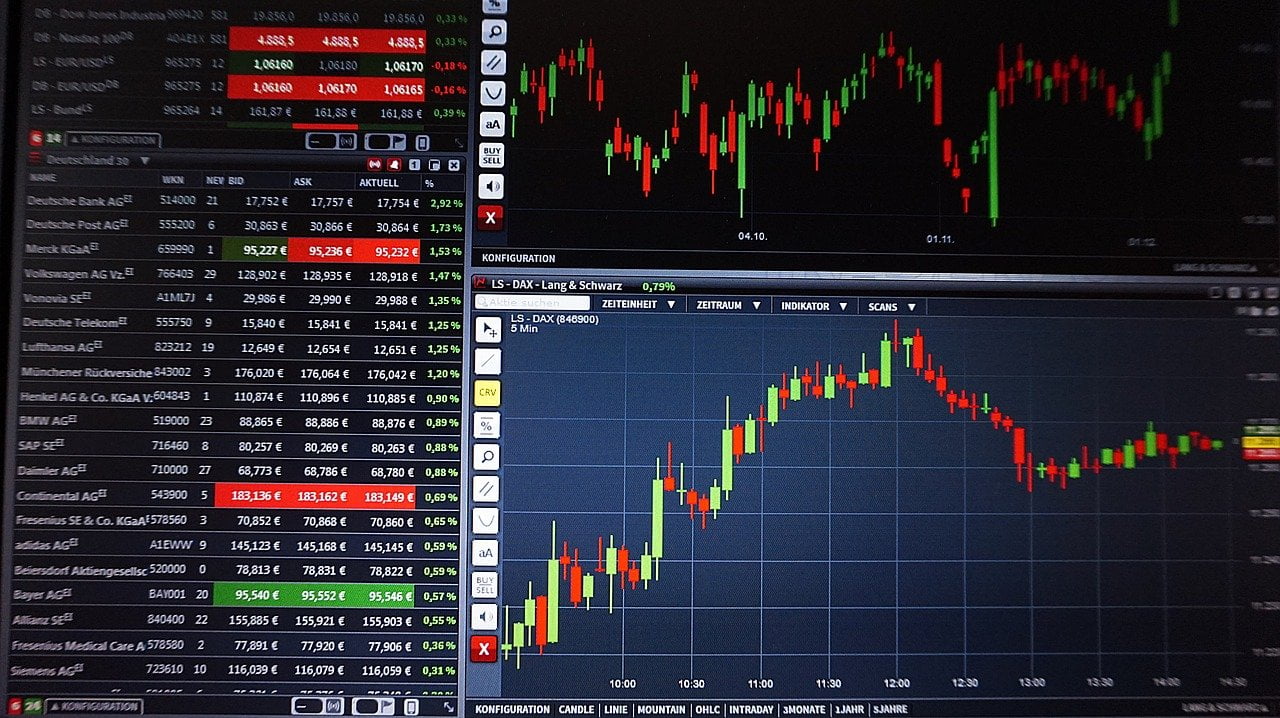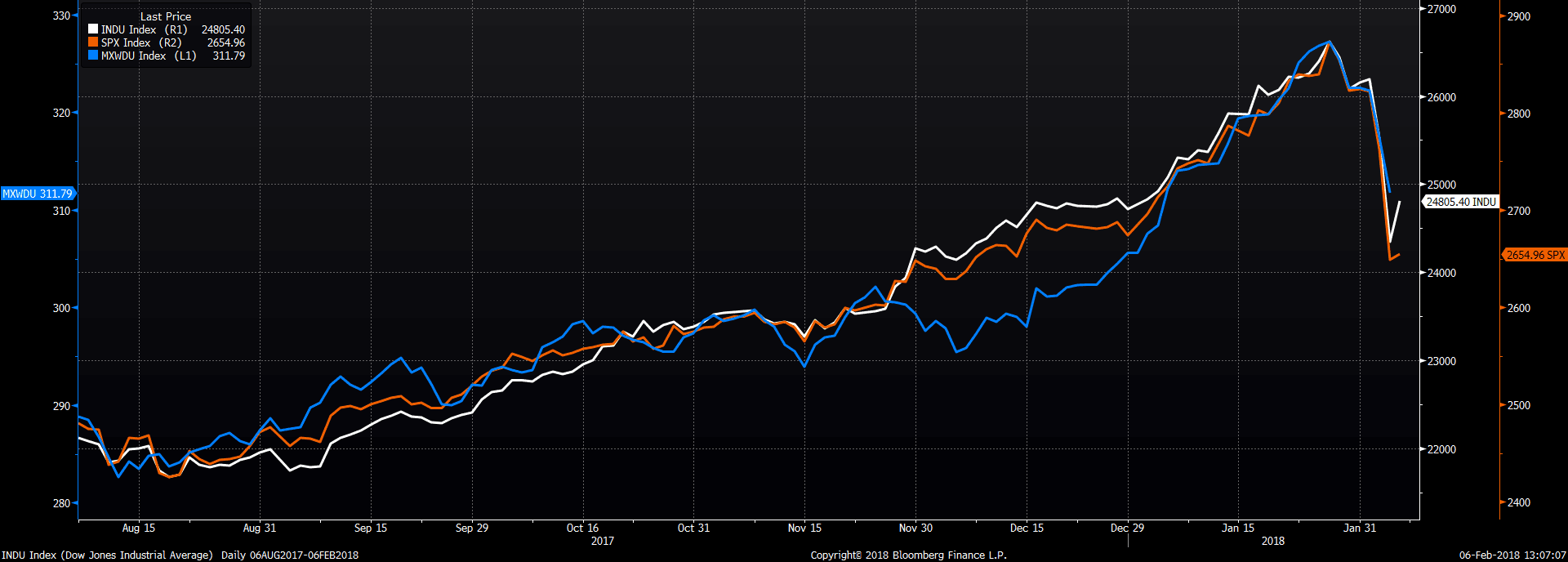The appetite for the stock market has exploded in recent months. Some of the reasons are explained by the increase in family savings during the pandemic, the inactivity, and the rise of digital channels.
So, the presence of retail investors in the options trading market has also increased this year, so much so that the contracting of these products has shot up to record highs.
In this “options trading for dummies” guide, you can learn about strike price, call strike price, call option, options contracts, the downside risk, and much more.
What’s an option?
Options are contracts that give the bearer the right –but not the obligation– to buy or sell underlying assets at a predetermined price before the expiration date of the options contract.
Therefore, unlike futures, options traders do not have to exercise their right to buy or sell if they do not wish to, and they must come up with their own options trading strategies.
Pros of Trading Options
Leverage
According to Merrill Edge, options can provide leverage as option buyers can pay a “relatively small premium for market exposure in relation to the contract value –usually 100 shares of the underlying stock.”
Investors can obtain considerable gains from comparatively minor, favorable percentage moves in the underlying product, the Bank of America company says.
Additional Income
Trading options is certainly an exciting alternative to those looking for additional income but do not have the time or flexibility to start studying the forex market.
Options trading is about just assuming –or predicting– if an asset –currencies or commodities– is rising or falling, or if the asset’s price will be above or below a specific price, at a certain time in the future.
Customized Risk Profiles
According to Benzinga, trading options allow you to modify your risk profile when trading “to adapt to a specific market view.”
For example, if Apple’s stock price rises to $140 by its December expiration date, “then you will have made $20 less the $7 premium you paid (or $13) times 100 shares for a net profit of $1,300 on the option or $2,200 had you purchased the stock.”
Otherwise, should the stock hit $110, “then you will just lose the $700 you initially paid for the option while you would have lost $800 had you instead purchased 100 shares of the stock itself.”

Cons of Trading Options
No Dividends
To receive dividends in options trading, you need to exercise the stock and be holding it on the stock’s date of record, “which is generally several weeks before the dividend is paid on the ex-dividend date,” Benzinga says.
Expiration
All options have an expiration date, after which they cease to exist and have no value. Options can be freely bought and sold until the close of the session on the expiration date. This is one of the fundamental differences between buying an option and buying the underlying asset.
Complexity
Options have specific characteristics that make them complex, The main one is, their price is strongly influenced by the expiration date, the underlying price, and the implied volatility.
If you think you can master it and outsmart the market, you are likely to have a rude awakening quickly. But through education and experience, you can make sense of the complexity and learn to trade options with confidence.
Stocks Vs Options
Stocks
The Good
Shares can be sold quickly and easily in the capital market at a fair price –which is called liquidity. Also, each share title offers investors a combination of expected profitability and risk, associated with the economic sector in which the company’s activities take place and with the characteristics of the company.
The future profitability of a share is uncertain. Therefore, the decision to buy or sell stock is based on the expected return.
Also, investors can create an investment portfolio with different stocks, in such a way as to compensate for the volatilities of one another.
Adequate diversification is not only achieved by choosing different shares of the same risk class but also several shares of different risk classes.
The Bad
The main risks are linked to the uncertainty about returns since return is never predictable. The behavior of the stock in the past does not guarantee its future evolution.
So, the evolution of a share depends –in addition to the company itself– on external factors such as the economic situation, the evolution of markets, interest rates, inflation, and other variables. Neither do they have a maturity period, so the investment can only be disposed of by selling the shares.
Options
The Good
It is possible to start trading with very small capital. Most brokers that offer options require a very low minimum deposit.
Therefore, it becomes an excellent way to enter this world of trading, for those who prefer to risk just a little money.
They also allow for trading several instruments with different underlying assets. Markets such as stocks, commodities, currencies, and cryptocurrencies can be targeted, and some brokers offer more than 100 contracts with different underlying assets.
Options can also offer big and fast profits between 70% and 90%, opening operations that can close in a matter of minutes.
The Bad
Many options brokers do not follow regulations. Also, although options are very accessible for small investors, many brokers limit the amount of money to trade, restricting operations of several thousand dollars.
Another disadvantage is that –unlike brokers that offer Forex– options brokers generally limit demo accounts.
There is also lots of biased information and scammers. Many gurus lead people to believe that it is a quick way to generate money.
Even the same traders, seeing that they can trade in this market easily, think that they also have everything to be profitable in a matter of minutes.

How Are Options Different From Stocks?
Dividends
According to Benzinga, when trading options, “you do not receive any dividends paid out to holders of the underlying stock when you hold a call option on a stock.”
People can receive the dividend when they exercise the stock and hold on to it on the stock’s date of record.
Regarding stock, the dividend is a distribution of benefits, through which a public limited company distributes to shares released from the issue itself, or shares of public limited companies owned by the company.
Own part of a company
Unlike options trading, with stock, you own a part of the company. Each investor in a company owns a certain number of shares, so they will own the percentage that these titles represent of the company. The value of all shares in the company is its market capitalization.
Buy and hold
In stock, Buy and Hold (B&H) is a long-term investment strategy based on buying shares in stable companies that pay dividends, and holding on to them indefinitely. Of course, on specific occasions shares will be sold, such as in the event of an irreparable deterioration of the company.
Why Investors Trade Options
Income Potential
do not follow regulations says that options allow for potential profit during both volatile times, and when the market is quiet or less volatile.
“This is possible because the prices of assets like stocks, currencies, and commodities are always moving, and no matter what the market conditions are there is an options strategy that can take advantage of it.”
Cost efficiency
Investors can obtain an option position similar to a stock position but at huge cost savings. “For example, to purchase 200 shares of an $80 stock, an investor must pay out $16,000.”
However, Benzinga says, “if the investor were to purchase two $20 calls (with each contract representing 100 shares), the total outlay would be only $4,000 (2 contracts x 100 shares/contract x $20 market price).”
The investor would then have an additional $12,000 to use whichever way they see. Still, the person must pick the right call to purchase Wto mimic the stock position properly.”
However, this strategy, known as stock replacement, is not only viable but also practical and cost-efficient, according to Benzinga.

Different Option Types ‘Calls’ and ‘Puts’
Example of a call option
Call options is a very important concept when it comes to options trading. An investor has a call option on T-Mobile Us Inc (NASDAQ:TMUS)’s shares with an exercise price of $20 expiring on March 25. The price of this option is $1 and each contract represents 100 T-Mobile Us shares.
The investor with a call option must pay $100 -$1 per share x 100 shares that each contract represents– and in return will have the right –not the obligation– to buy the 100 shares at $20 until March 25, regardless of the company share price in the market.
If by March 25, the T-Mobile Us’ shares are trading below $20 –for example at $19.50– the buyer will not be interested in exercising the call, since they are able to buy them at $19.50 in the market.
Example of a put option
A put option on T-Mobile Us shares has an exercise price of $20 expiring on March 25. The price of this option is $1 and each contract represents 100 company shares.
The investor who buys this option must pay $100 –$1 per share x 100 shares that each contract represents– and in return will have the right –not the obligation– to sell 100 company shares at $20 until March 25, regardless of the price in the market.
If by March 25, the T-Mobile Us shares are trading above $20 –for example at $20.50– the buyer of the put will not be interested in exercising it, since they will be able to sell those 100 company shares at $20.50 in the market.
Options terms to learn
Derivatives
The financial derivative originates from the underlying asset. The underlying asset can be financial –for example, a stock or bond– or non-financial –like the financial future on gold or oil.
Premiums
According to Investopedia, a premium is “the price of a bond or other security above its issuance price or intrinsic value. A bond might trade at a premium because its interest rate is higher than the current market interest rates.”
Spreads
In general terms, spreads are the difference between the bid and ask price for a given security. Therefore, spread refers to the spread or margin, either of prices in the same product, either between two products or between two expiration dates of a product.
Strike Price
The strike price is the price at which a financial asset is bought or sold –generally a financial option– already defined by the issuer of this option.
Holder and Writer
Stock Investor’s definition says that “Options are a contract between a buyer, who is known as the option holder, and a seller, who is the option writer.”
This contract gives the holder the right –but not the obligation– to buy or sell an underlying security at a specific price, known as the strike price before a set expiration date.
At the money (ATM)
According to Call Options, an option is said to be at the money if the current stock price is equal to the strike price. It doesn’t matter if we are talking about calls or puts. Any call or put whose underlying stock price equals the strike price is said to be at the money.
Out of the money (OTM)
“Out of the money” options are the options that would not be exercised at the expiration date since they entail unnecessary losses for the buyer.
In the money (ITM)
In options trading, in the money (ITM) is the name of a financial option that has intrinsic value. For example, in the case of a call option, if the spot price of the underlying asset is higher than the option’s specific strike price.
Option Greeks
Option traders use Greek letters to measure the sensitivity of an option’s price to different factors, such as the volatility of its underlying asset.
Vega
Vega is a financial ratio that measures how volatile a financial option is. It specifically depicts the change in value that the premium of the option will suffer in the event of variations of 1% in volatility.
Theta
Investopedia defines theta as a measure of the rate of decline in the value of an option due to the passage of time. It can also be called a time decay of an option. If everything remains constant, the option loses value as the time approaches the option’s expiration
Delta
Delta is a variable that represents how much the price of an option changes if the underlying asset changes its price by 1 cent, assuming that the rest of the factors that influence the price of an option –volatility, time to expiration, etc.– remain stable.
Gamma
In options trading, gamma is the variation of the delta of an option before variations of the underlying stock. The gamma is the partial derivative of delta against rises in the underlying asset. It shows how the coverage should change to maintain a neutral delta when the spot moves.
FAQs
What is the best way to learn option trading?
There are many ways, but the cheapest one to learn options trading is to read different materials about the field.
The internet offers extensive shelves of blogs, newsletters, forums, and several other resources. It is only the initiative of options traders to look for them and choose in what form they will feel comfortable.
How much money do you need for options trading?
First of all, it should be remembered that most brokers in the North American market require a minimum amount of $2,000 to open a Reg-T margin account.
Cash accounts do not have this condition and can be opened with any amount. However, in order to initiate net premium-selling strategies, you need a margin account.
Can you learn options trading by yourself?
Although the learning curve of options traders is pretty steep, yes, you can. You can surf the internet and sign up for options trading courses online. Some of the best include those on Simpler Trading, Udemy, Bullish Bears, and Option Alpha.
Can you become a millionaire trading options?
Traders Magazine boldly asserts that you can get rich on options trading. Since an option contract represents 100 shares of the underlying stock, “you can profit from controlling a lot more shares of your favorite growth stock than you would, if you were to purchase individual shares with the same amount of cash.”
Is options trading high risk?
Options trading is not a real investment. It is speculating and taking a calculated risk in the hopes of making a profit from market fluctuations.
Your goal is to move the odds in your favor. This ensures the success of your operations. Don’t be afraid to take risks and make mistakes; mistakes are where you learn how to achieve rewards.
Final Thoughts
With options trading, you obtain a right –not an obligation– to buy or sell at a specified price and on a specified date.
Options trading also allow risk management to suit the risk profile of each investor. By buying options you only risk the premium, which is your maximum loss.
But when you sell options, you are accepting a profit limited to what you enter as a premium, while taking unlimited potential losses.






